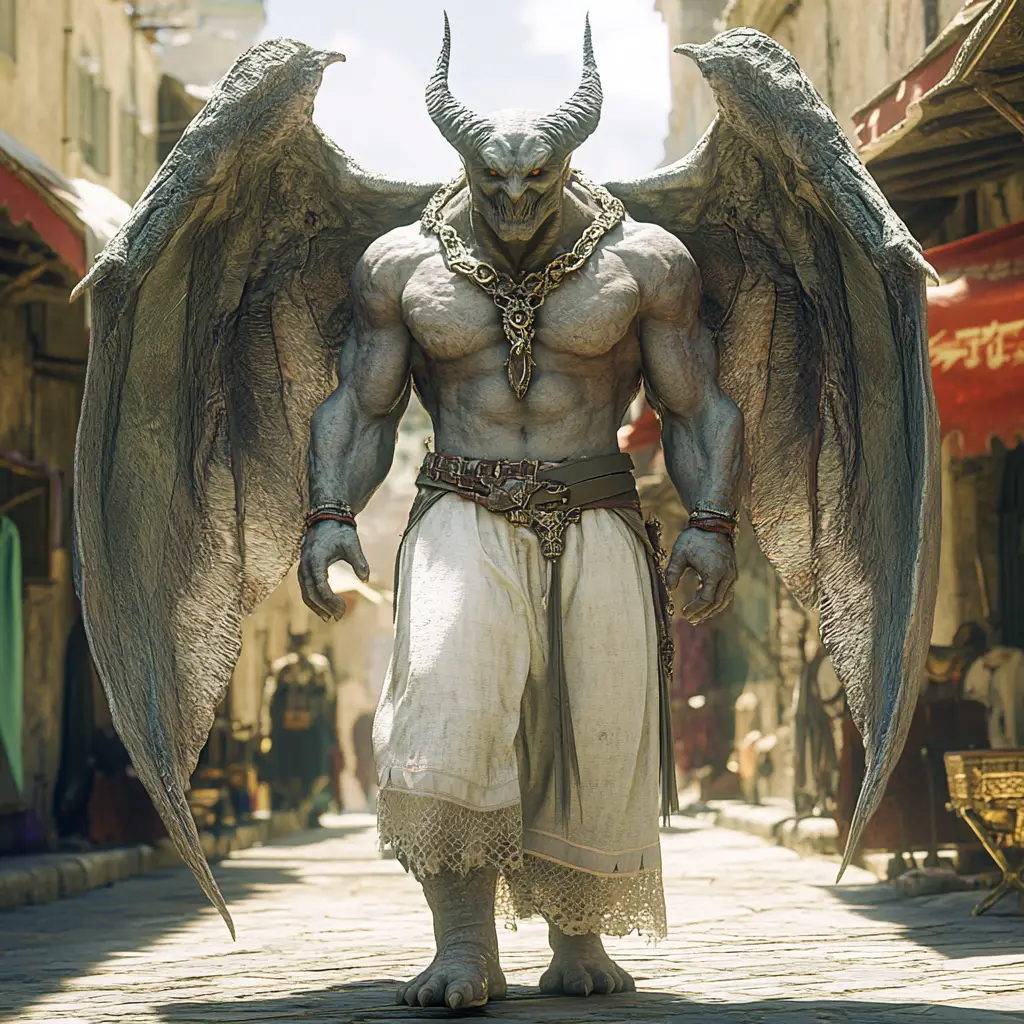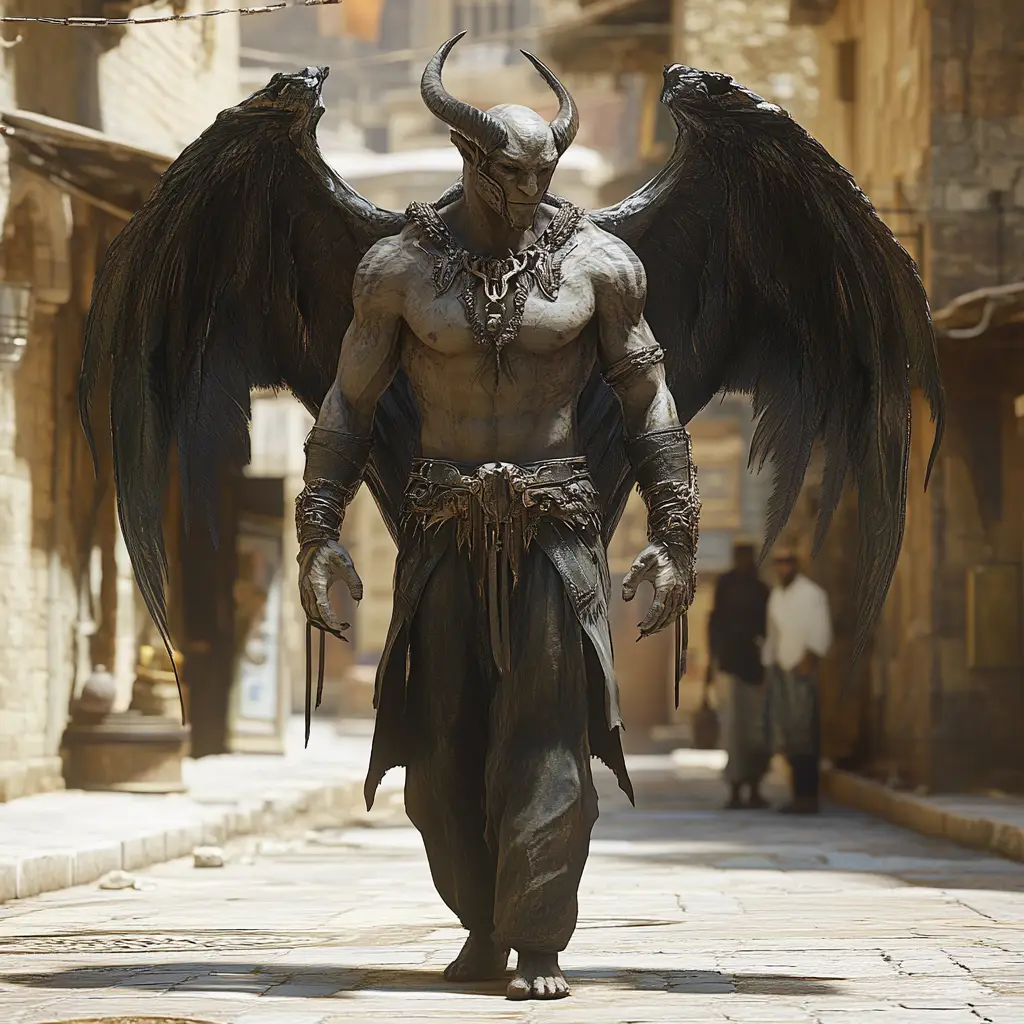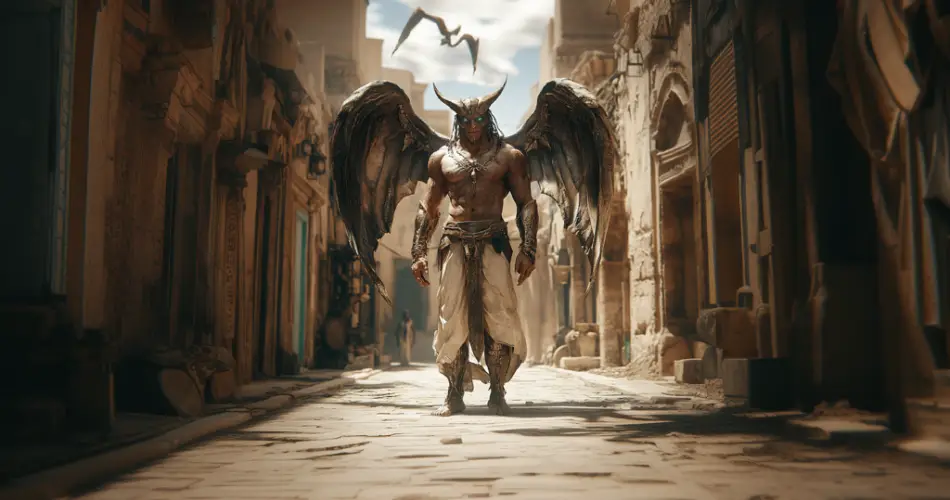Jewish folklore and Mythology are rich with stories of mystical beings and supernatural entities that capture the imagination and reflect the complex spiritual beliefs of the culture. One of the most intriguing and mysterious figures within this tradition is the Shedim.
These beings, often misunderstood or misrepresented, hold a unique place in Jewish mythology and are still very important to the Jewish culture and religion today. This blog post delves into the origin, characteristics, and cultural significance of the Shedim.
Origins of the Shedim
The term “Shedim” first appears in ancient Jewish texts and is often translated as “demons.” However, this translation does not capture the full complexity of these entities.
According to ancient Jewish writings and oral history, the Shedim are mythical beings that were also created by the Jewish God Yahweh during the Age of Creation. On the Sixth day of creation, after the first Man had been formed, Yahweh started working on the Shedim; however, the day passed before this new creation could be completed.
Since Yahweh was obligated to rest on the seventh day, the new creation was left uncompleted. After the seventh day had passed, Yahweh decided to leave the work uncompleted to show the importance of the sabbat day as a day of rest. Since the creation of the Shedim was not completed, they are neither fully human nor fully divine. They had souls like humans but did not have the bodies to contain these souls.
In another explanation for the origin of the Shedim, it is believed that they were among the builders of the Tower Of Babel. When Yahweh decided to cause confusion among the builders, the Shedim remained bound together to wage war against God, who punished them for their vain pride by turning them into Shedim.
What does a Shedim look like?

The physical features of the Shedim reflect their position as hybrids of humans and angles between humans and angels. They are said to have human bodies with wings and rooster feet. However, the Shidim have the ability to hide their wings and mingle with humans undetected.
Powers and Characteristics of Shedim
The Shedim can change their appearance at will, sometimes as animals or humans. This ability makes them particularly deceptive and dangerous in Jewish mythology. The Shedim are unable to transform their rooster feet, and a disguised Shedim can be easily detected by throwing ashes on the floor to reveal their footprint.
The Shedim have the ability to fly and foresee future events. They also remain invisible to the human eyes but can be seen by those who are spiritually inclined.
Although the Shedim do not have a human body, they can eat and drink like humans, reproduce like humans, and grow old and die.
Are Shedims Good or Bad

It is difficult to objectively define the Shedims as either good or bad, as various ancient civilizations dealt with these supernatural beings differently.
In ancient Mesopotamia, the Shedims are worshipped as protective and benevolent spirits. These supernatural have a moral compass that is very different from what is familiar; thus, they may act in ways that are morally ambiguous and vague to humans.
The morally ambiguous nature of the Shedim is illustrated in a captivating tale about a hunchback who stumbled upon a group of Shedim dancing wildly in the forest. Intrigued by the scene, the Shedim invited him to join their revelry. The Man, eager to participate, began dancing enthusiastically with the supernatural beings. Pleased with his lively participation, the Shedim were so delighted that they decided to reward him. They invited him to return the next day, taking his hump as a token to ensure his return.
The Man had a twin brother who, envious of his newfound straightened posture and improved appearance, pressed him for details on how he had achieved such a miraculous transformation. The Man shared the story of his encounter. Driven by jealousy and the desire to improve his own physique, the twin set off to replicate his brother’s experience.
When the Shedim appeared again in the woods, the twin eagerly joined their dance, hoping for a similar reward. However, the Shedim, mistaking him for his brother, assumed he had returned to fulfil his promise. Instead of a reward, they handed him back the “pledge” they had taken the day before—his brother’s hump. The twin left the forest, now burdened with not just his own hump but also his brother’s, one on his back and another on his chest.
Shedim in the Bible
In the Hebrew Bible, the Shedim are obviously interpreted in a negative sense. The term “Shedim” appears specifically in two passages in the Hebrew Bible.
First, in Deuteronomy 32:17, “They sacrificed to demons [Shedim], not God, to gods they had not known, to new gods that had come recently, whom your fathers had never dreaded”.
Shedims are also Mentioned in Psalm 106: 37; “They sacrificed their sons and their daughters to demons [Shedim]”.
In both appearances, the Shedim are associated with pagan gods and rituals. This connection suggests that they were viewed as foreign or false gods, distinct from the monotheistic worship of Yahweh.
Unlike later interpretations, where demons are seen as malevolent spiritual beings actively working against God’s will, the biblical references to Shedim do not provide a detailed description or clear role for these entities. They are simply referred to in the context of idolatry and foreign worship without the more elaborate narratives found in later Jewish or Christian demonology.
